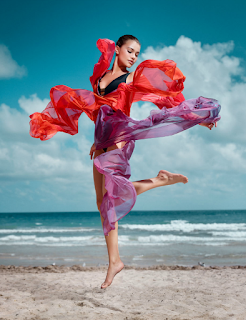In these images, we can see my personal project topic of beauty being explored in a number of different ways. This can be done through composition, colour, tone and form. Alternatively, what essentially makes a beauty image stand out is through personal aspects such as the clothing in which the person is wearing and also the makeup which they wear. In the following three images, beauty is explored through all of the previous components. However I feel like the use of selective colour is striking and draws the audiences attention to key points on the face. For example, in the first image selective colour is used through the bold red on the lips. All of the other colours in the image appear to be washed out, with the face appearing very pale and the white glow around it only making the model appear more ghostly. The colour also seems to have been washed out from the eyes, and a dark makeup has also been used to exaggerate this. Without the red lips, the viewer can not really see anything striking apart from the gold jewellery she wears on her hand.
I also chose three images in which contrasted to the previous ones I had looked at. In the following images colour is not the most striking presence, however it is the use of black and white and the bold black makeup which stands out to me the most. Particularly in the first image, the pure white background makes the model appear to be much more bold. Her eyelids are lined with black eyeliner and the long black eyelashes draw the audiences attention to the centre of the face. This is also reinforced by the use of the hand, with the black jewellery and crisp black fingernails. I like the use of black and white in these images as they hold a powerful attraction in the image. This is one that I would look at and instantly be inclined to view as I feel it is so striking and also not similar to any I have seen previously.






















































